Spirit Of The Week: Forbidden Small Batch Bourbon
Forbidden’s master distiller Marianne Eaves spills the details on her innovative new whiskey.
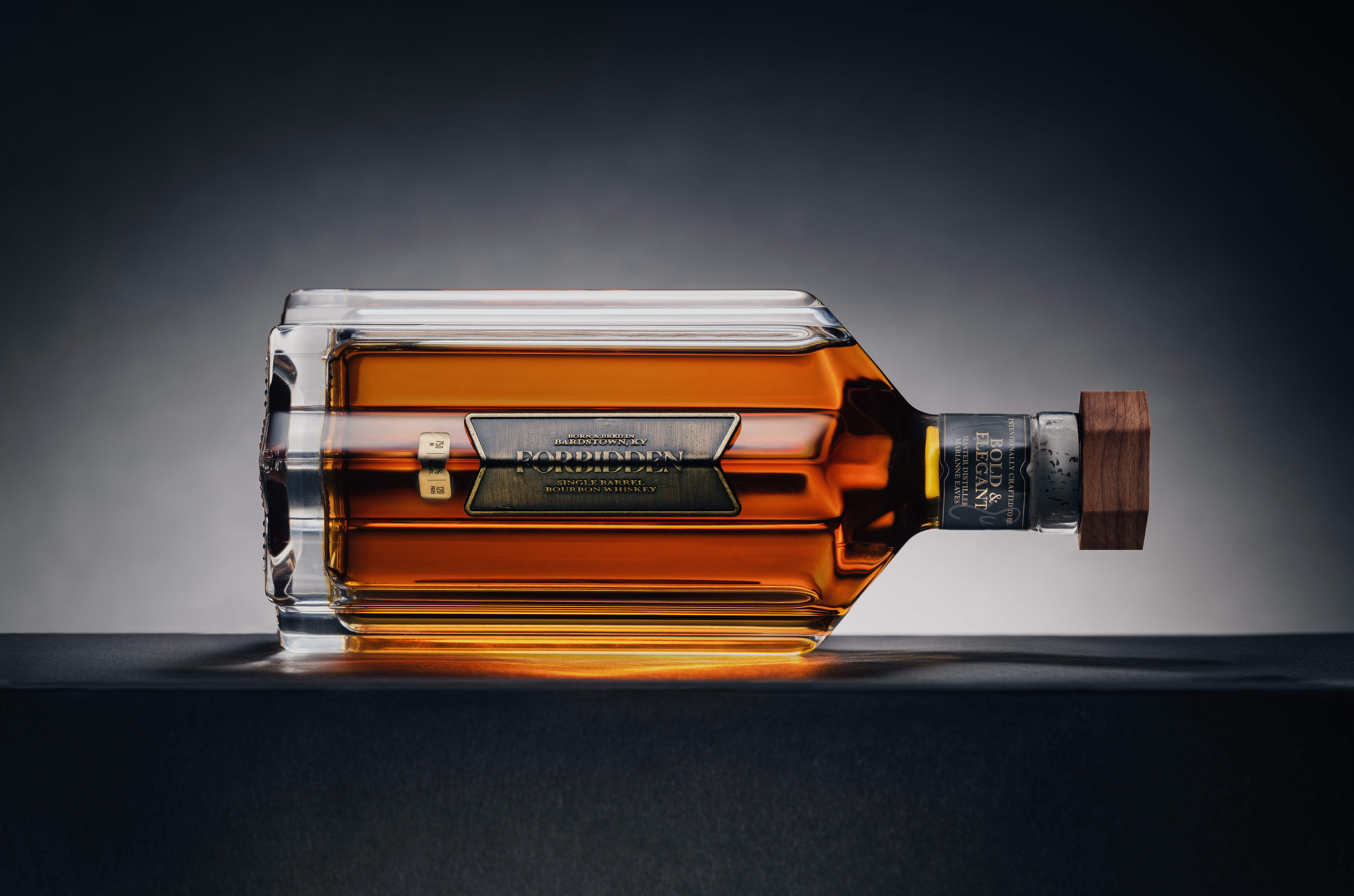
The ascension of Marianne Eaves in the world of bourbon may seem meteoric, but it has been steadily won over 15 years with a combination of creative talent and scientific discipline.
At the University of Louisville, a young Eaves studied chemical engineering, thinking she’d spend a career nerding out over beakers and incubators, focusing on alternative fuels and renewable energy. Little did she know then that her first job out of college in 2009, interning at the serendipitously close Brown-Forman, would set her on a stratospheric course in whiskey making.
“Of course I accepted because I was a 21 year old college kid,” Eaves laughs. “What sounds better than making booze when you’re 21?”
The Kentucky born talent quickly worked her way up the ranks. She was hired full-time in 2012 as a process R&D engineer and only two short years later—after displaying impressive aptitudes in not only left-brain engineering, but also sommelier-level tasting—promoted to master taster.
There she worked under Woodford Reserve’s Chris Morris, a globally esteemed master distiller renowned for his creative musings. Morris’ wild Dr. Bunsen Honeydew-like experiments playing with different grains, mashbills and finishing woods are credited with helping put Woodford Reserve on the bourbon aficionado map. Working directly under Morris and manifesting many of his eccentric whiskey contemplations taught the young Eaves the blueprint for thinking way outside the box.
After cutting her whiskey teeth at Woodford Reserve, Eaves moved on to the up-and-coming Castle and Key distillery in nearby Frankfort, where she became Kentucky’s first female master distiller since Prohibition, an earned accomplishment she takes great pride in. Then in 2019 she was tapped by a team led by Peyton and Eli Manning to blend a hundred barrels of 13-year-old Tennessee bourbon for the nascent Sweetens Cove project.
This is where we first spoke with Eaves years ago, but recently caught up with the rising star yet again as she releases Forbidden—the first bourbon the master distiller (and equity partner) was granted complete and total control over, from grain to glass.
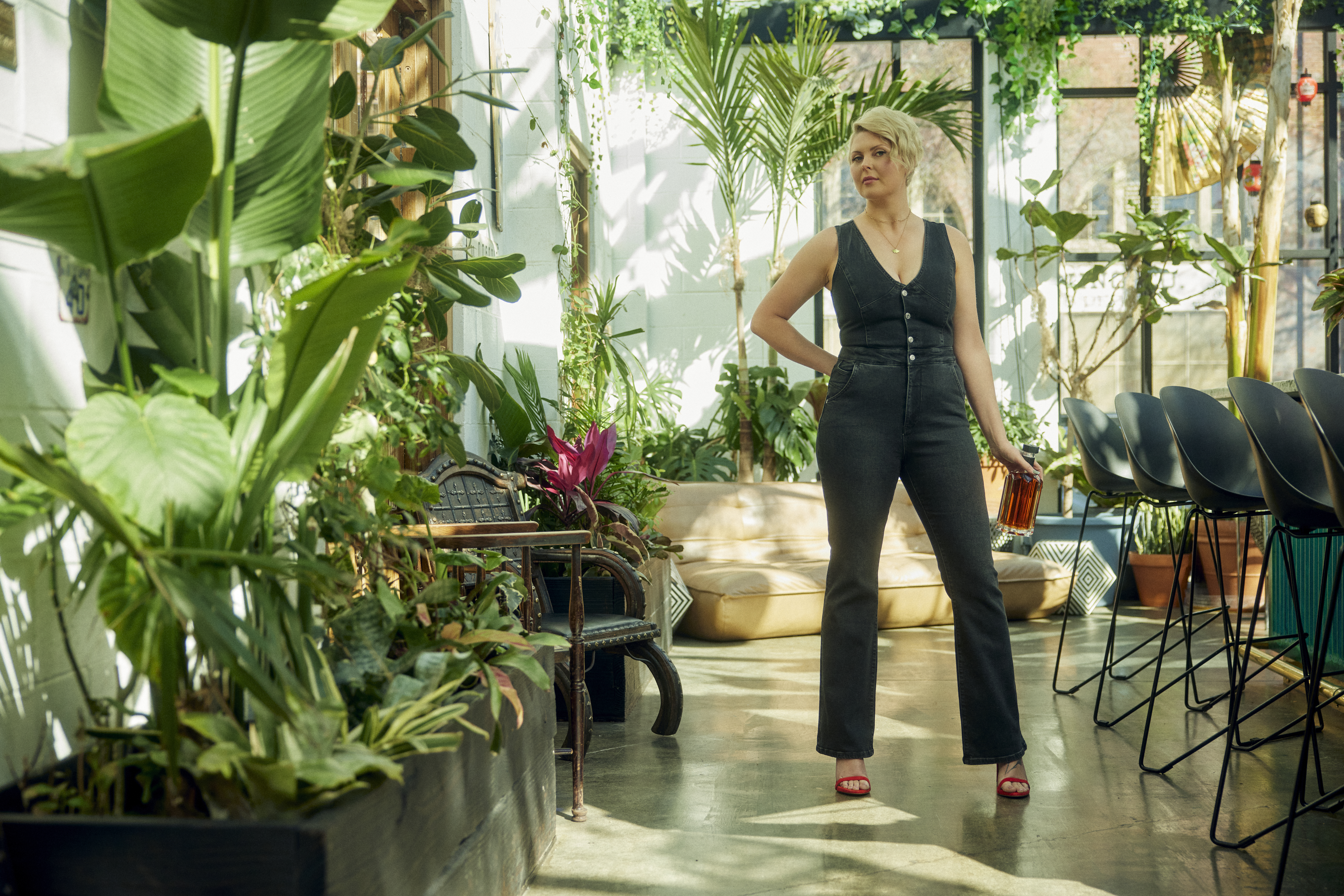
Let’s talk about Chris Morris for a second because I’ve admired his work for a long time. He’s considered a very creative and experimental master distiller. What was it like to learn from him?
It was incredible working for Brown-Foreman with Chris and their R&D department, which is where I came up in the organization. I got to see a ton of that experimentation even before I started training as master taster or being labeled as his protege, because basically he’ll come up with a concept and then it kind of trickles down even to the interns to collect all the data.
So Chris would say, “I think I’d love to try a Cabernet wine finish.” So somebody in R&D would be assigned to that experiment, and we would collect the data and take samples and present those to Chris and ask, “Hey, is this go on where you thought you wanted it to go? Do you want to try something else?” And kind of keep him up to date on all of those different parts of the process. So I did that for a lot of different things, not just the wood finishings as you mentioned, but also the grain, the mashbills. Sourcing these different grains was part of our job in research development.
And then aside from what was coming down the line from Chris, they encouraged us and me in particular to make weird new things. My office was a little broom closet across from the pilot plant, which is their micro distillery in the corporate headquarters of Brown-Foreman. So they were like, “All right, we got all this miniature mini wood for pot stills, we need to keep it going. So every month make something.” And they didn’t really put any rails on it, so I made some really interesting things that will probably never see the light of day. But it was just really fun to learn and have that freedom to experiment.
It seems like experimentation is something you relish. How has that influenced you?
I think that you hit the nail on the head. I fell in love with the process of making bourbon through my role in research and development and being able to be creative and out of the box. How that has manifested in the Forbidden product is really just only the tip of the iceberg. I think that there’s so much more innovation ahead in bourbon.
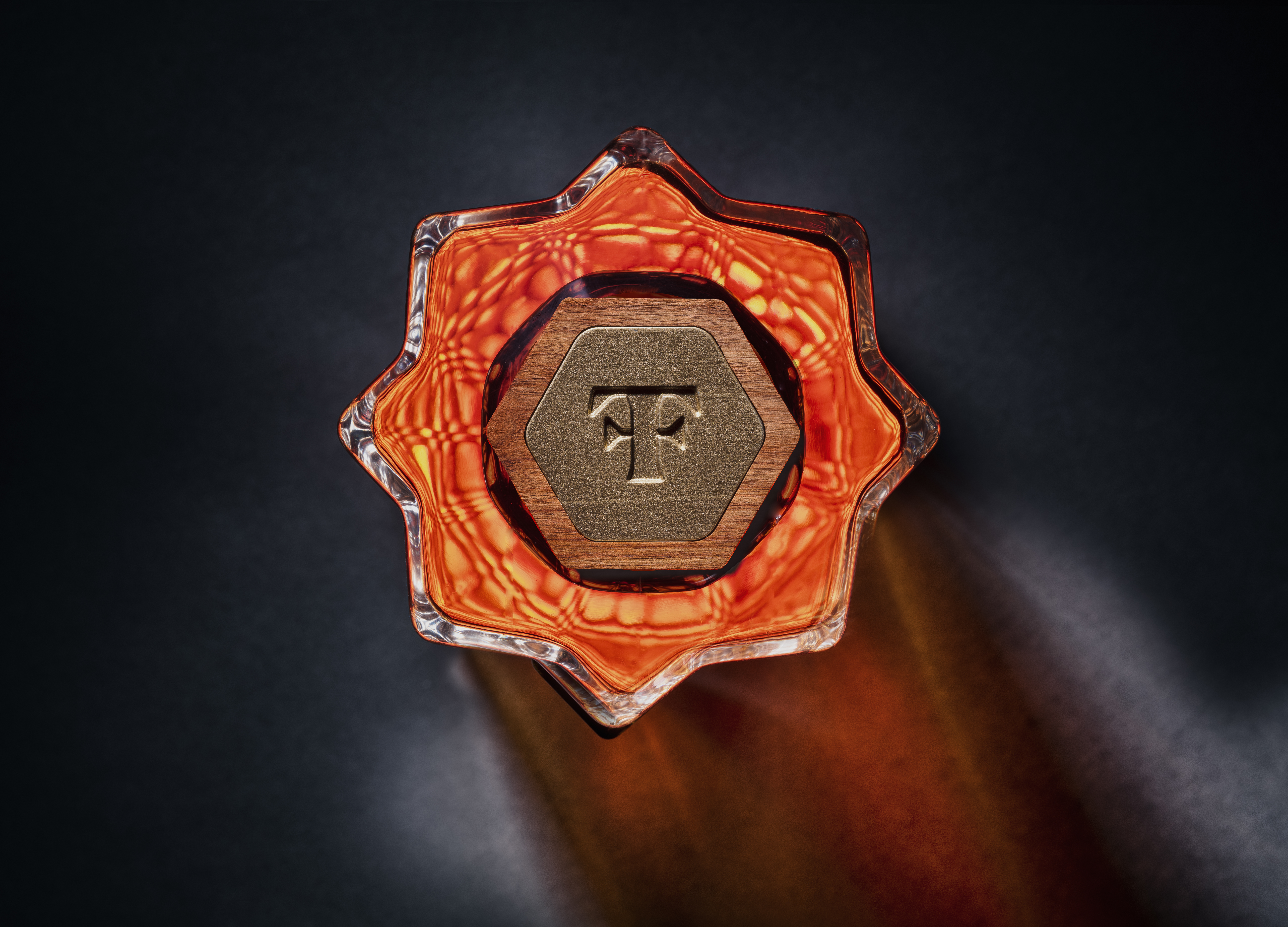
One thing that I will do at some point is get myself out of Kentucky, out of the country and overseas to search out unique processes that folks do in other spirit categories. I’m aware of some interesting ways that they’ll apply oxygen to tequila to smooth it out prior to maturation that I’m dying to try with a bourbon. It’s going to take me having my own production facility to be able to do some of these things, because when you contract distill, they’re only willing to go so far with the different variables.
Eventually I’m really excited to push the boundaries of the industry and bourbon and what people perceive to be such a small box because of all the different layers of regulation: It’s got to be 51% corn and can’t be distilled above 160 proof and can’t go into the barrel at any higher than 125 proof. Yeah, I am really excited about it and I appreciate that acknowledgement from you.
I’m a big fan of Castle and Key’s whiskeys. Your influence must still be in their DNA. And then Sweetens Cove was pretty high-profile just because the names involved: the Mannings, Andy Roddick, etc. What was it like working on a celebrity whiskey?
It was an incredible experience, and I was so proud to be entrusted with the reputation of such high profile celebrities. When I first accepted the role, that wasn’t really a factor for me. My conversation was with the CEO and co-owner, and as he was telling me about Sweetens Cove, the golf course and how they kind of saved it from turning into ruin. It felt a little similar to what I had just gone through reviving Castle and Key.
I was like, “You know what? These guys have a good heart. They want to do good things. They have a great story. They have a hundred barrels of 13-year-old bourbon.” And it had been quite a while since I’d had the chance to do anything with product that was that age.
So we agreed to sign up for that first 2020 release. I took those hundred barrels and made five different blends and also pulled out four single barrels for them, and it went off really well. It was a tough time because it was slated to launch right as the pandemic started, so we had to rethink all of that. But everybody really seemed to enjoy that first 2020 release. After they started promoting it they realized, Oh, people are really excited that you’re on this team. We think we want you to do more for us. We want to pay you more money and make this grow even bigger. I will not say no to any of those things.
You told me earlier that the Forbidden recipe was developed in 2016 and finally distilled in 2018 at Castle and Key. Then in 2020 you switched production to Bardstown Distillery. Is this first Forbidden batch a combination of the Castle and Key and Bardstown lots, or just Castle and Key?
It’s around 90% Castle and Key. There is a little bit of the Bardstown bourbon because it’s so sweet and creamy, and it’s got this long lingering finish. So it actually was a benefit to the complexity overall.
For the whiskey nerds, let’s get a little bit into the weeds. You used some interesting grains—white winter wheat, white corn and malted barley. How did you choose the mashbill, and what did you intend?
The white corn was a specific request from the guys out of South Carolina because they eat a lot of white corn in the summer in South Carolina. So that was a nod to the culinary traditions of the South. We chose white wheat because I wanted to look at something that was out of the box. And a lot of distilleries do red wheat, and because white wheat doesn’t have that red seed coat, it’s not as dry or tannic. They don’t feed white wheat to animals, it is strictly used for human consumption. The opposite is true for yellow corn [used in most bourbons]—80 to 90% of all the yellow corn that’s grown is made for oils, syrups and animal feed. It’s not actually for humans to consume.
So we’re using food-grade grains, not feed-grade grains. Regarding the white corn and white wheat, I chose to add a high percentage of barley. Malted barley is something that American distillers minimize because it’s an expensive grain. So they talk about it just for its enzyme contribution, but they don’t talk about flavor or mouthfeel at all, which I think is definitely a misstep because it adds a tremendous amount of flavor and mouthfeel—any brewer will tell you that barley is such a huge part of what they do. I did some experimentation while I was still working at Brown-Foreman that kind of cemented that for me. With most of the recipes that I create, you’ll see that they’re high barley in comparison to a lot of other bourbon producers.
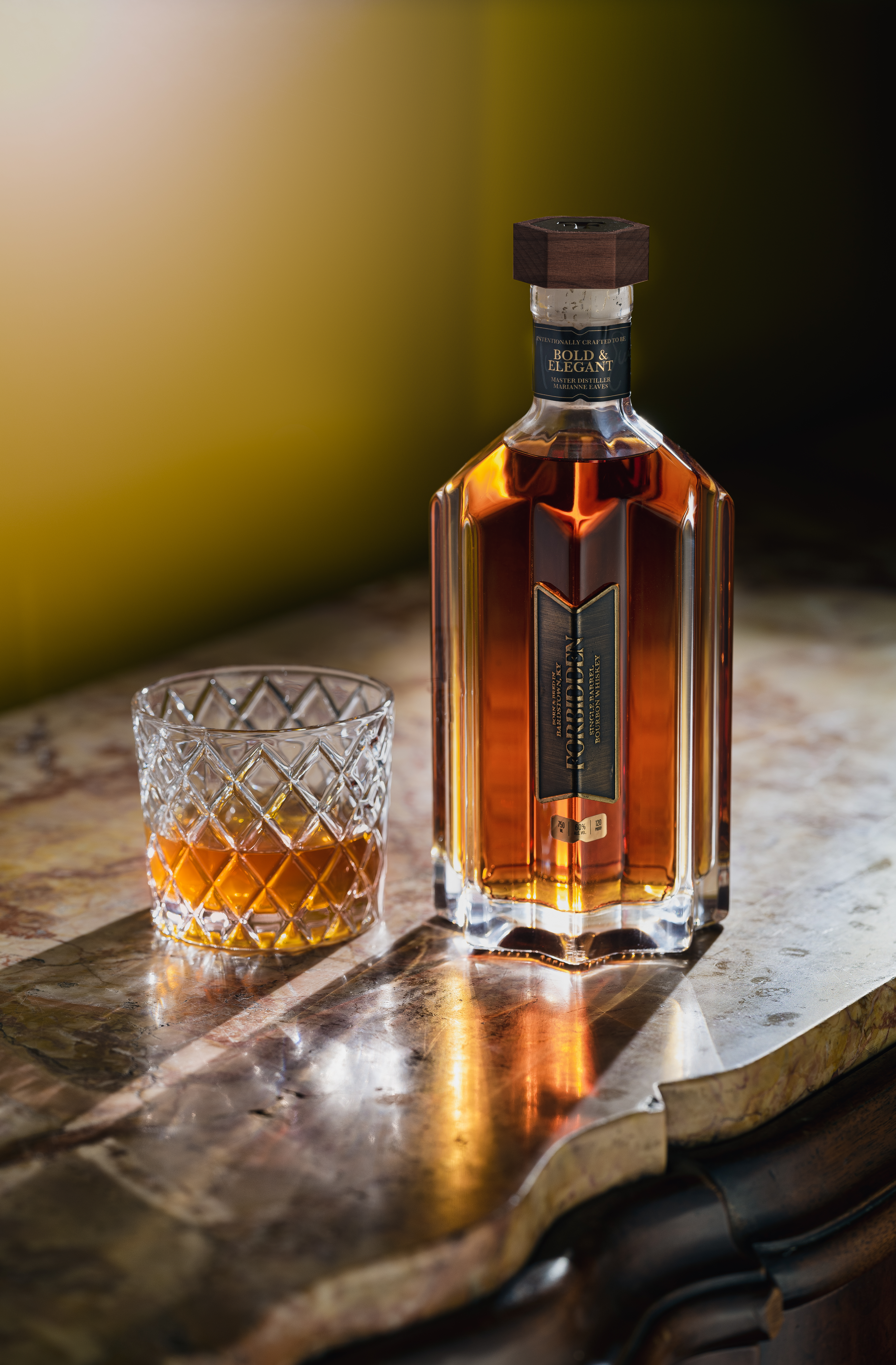
And the low temperature fermentation?
This is something that I had done some research on after having some conversations with [American whiskey legend] Jim Rutledge because he had a pretty low fermentation at Four Roses. I don’t know if they’ve kept that up since his moving on, because it is an energy intensive process. But the reason why it is done is because if you slow down that initial ramp-up phase, as the yeast get acclimated into the fermentation they aren’t as stressed out and they produce a whole lot of different flavor before they get to the work of converting starch into alcohol.
It’s been tested a lot of different times, but not really since the early 1900s—1910 is the last research that I saw on low temperature fermentation and its effects. And I believe that was the same research that Jim was referring to when he got that process started at Four Roses. Think about it in culinary terms: low and slow. You get the yeast started lower, it’s a slower fermentation, but the flavors are more complex. It’s a richer flavor and the distiller’s beer, which you then distill into white dog.
So like higher esters, right? And the result of that, the real world effect of esters is normally a sweeter profile.
Correct. Fruity, sweet, like fruitier more complex. So you can even get some spice characteristics in the fermentation, which people don’t often think if it’s not got rye in it, which just doesn’t.
What did you think of your first distillation? Is it easy to tell what the white dog is going to taste like after aging?
Because of the role I had at Brown-Foreman I have a lot of experience tasting new make. And then they have a bunch of warehouses, hundreds of thousands of barrels, so that really helped a lot in my being able to kind of predict where the profile might go.
But I knew we had great new make—I really wasn’t nervous about it. It’s just a matter of how long they would need to age. So I was testing yearly and then a little more frequently toward the end there. But at our four-year mark, everybody was kind of on the edge of their seat: We waited so long, is it ready yet? And then I wanted it to have one more hot summer. So I said, Okay guys, just one more year and I think it’ll be good! And they were willing to be patient and take my recommendations. And so the first release is five years old.
I tried it last week with some friends, it’s delicious. Walk us through some of the tasting notes a reader can expect.
Yeah, absolutely. But I take a unique approach when it comes to tasting. I think the experience and the feeling of a bourbon is maybe more important, but definitely just as important, as the flavor notes.
So when you approach a glass of Forbidden, if you’re getting our small-batch product, it’s proofed down to 95.2 because I want it to be more approachable. It’s not going to be too heavy on the nose or too heavy on the palate, but definitely still has a backbone.
It’s going to have a nice long lingering finish and a warmth that isn’t like a burn. You’ll get some of what is familiar about Kentucky—the sweetness, the vanilla, the caramel and some light fruity characteristics—but you’re also going to get some new experiences because of the combination of the white corn and the white wheat.
And then kind of harkening back again to the notion of honoring southern culinary tradition, butter and cream run through it, and also some sweet spice characteristics from the barrel. Some of that light-charred oak sugar. There’s also not a really heavy oak characteristic, but it’s definitely present. Expect warm vanilla and those sweet grain notes to follow into the finish.
I love the mouthfeel, definitely get the buttery notes. There’s a little bit of candied orange peel or something along those lines, something really sweet. It’s a really nice whiskey.
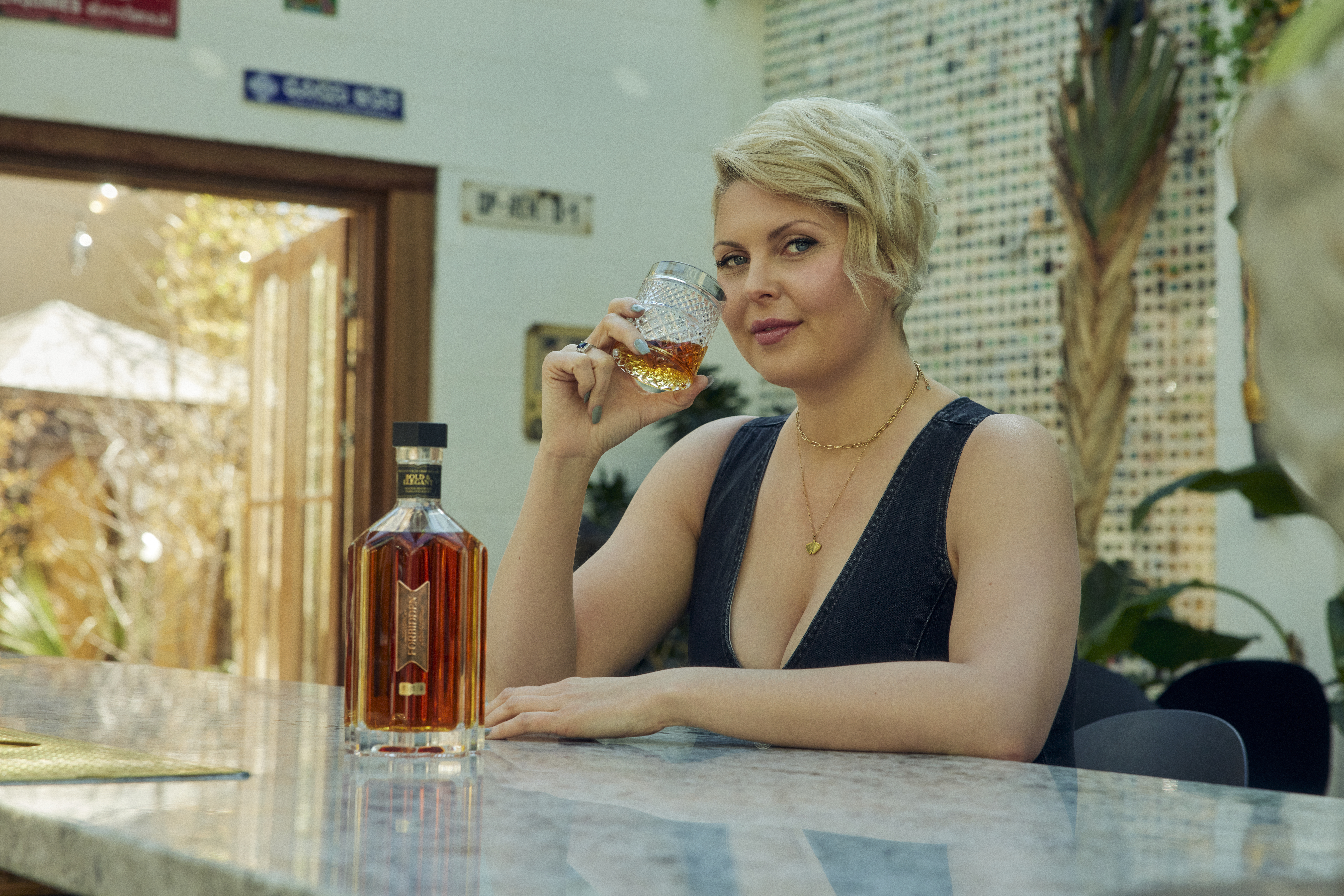
One last question: I don’t think being a woman should be an issue. You’re a distiller. But I also know that bourbon has traditionally been a heavily male-dominated field. Is being a female master distiller something you’re proud you’re helping to pioneer?
Yeah. My feelings about it have definitely evolved as I’ve kind of been moving through the industry, being a female master and that being so heavily promoted and then moving to Castle and Key and assuming the title of Kentucky’s first female master distiller. It was a huge story, the PR on that has sustained even until now. And because of that, I don’t want to turn my back on the story. I think as long as we’re still talking about it, it’s because it’s interesting and it needs to be said.
I do thin there has been a point for me and all other women where we’re like, Can you quit grouping us together and just creating a token panel? Like, “Here’s the women’s panel.” Then we have five other panels for the men that are actually talking about technical whiskey production, and we’re going to ask the women how they feel about wearing steel toe boots to work every day.
I think the reason why I’m not scared to have it in my social media profile, Kentucky’s first female master distiller, is because the amount of people that come to me and are just like, “Thank you for being visible. We know that it’s not easy, and we just appreciate seeing a woman kicking ass in the bourbon industry.” For the women who came before us, for the women who are battling now, and then for all the women that come after. I just knew not taking the title or minimizing the significance of it by not embracing the media coverage was not doing anybody any service really. $150
Follow Deputy Editor Nicolas Stetcher on Instagram at @nickstecher and @boozeoftheday.
